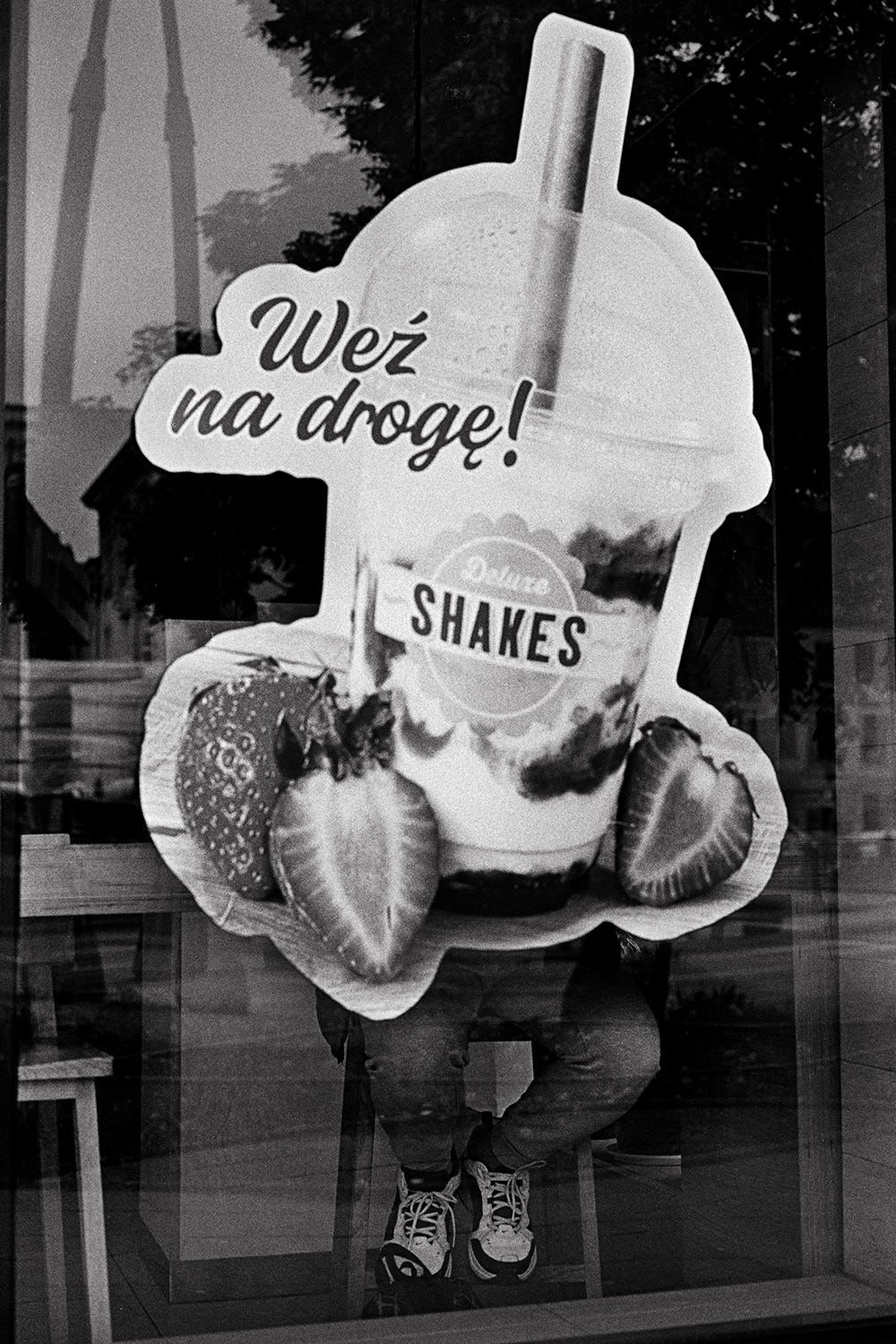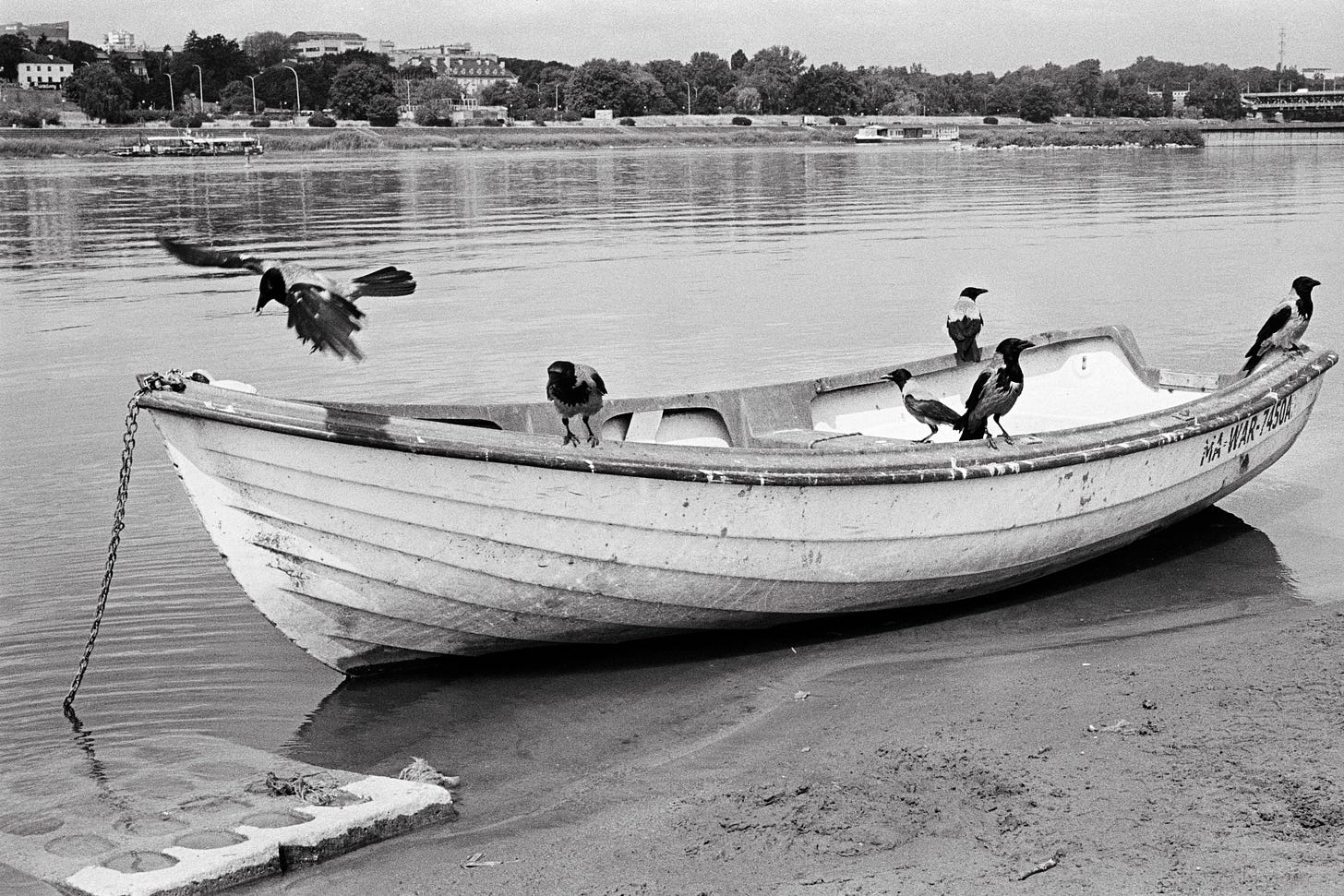Issue 11: The Disponible Street Photographer
Or: A Necessary State to Make Good Photographs
You miss 100% of the shots you don't take. This well-worn epigram is attributed to the Canadian ice-hockey legend, Wayne Gretzky (or, maybe, Michael Scott.) Though it has been flogged to death by linked-influencers and insufferable evangelists of the grindset, the droll truism nevertheless retains value, and we street photographers should bear it in mind.
What causes reluctance is different in every shot missed, however, a common rationale is that one was not open enough, not quite ready to make the picture. Opportunities squandered, then, by a failure to notice or impeded by distraction. More than once I have found myself on the street, camera in hand and yet, hindered by a loss of focus, a drop in confidence, the aftermath of a confrontation, or too much on my mind. I often reflect on the shots missed as a result.
In interviews and masterclasses, Brooklyn-born, Paris-dwelling street photographer Richard Kalvar talks of the French word disponible as a state of mind important to his practice - in his words, a necessary state for taking good pictures. It is a mindset within which the street photographer can be at their most receptive to the unknown, and benefit from the photographic riches that offers.
A Definition
Disponible is an adjective defined by the Larousse Dictionnaire as describing something available which one can dispose of. Think, for instance, of disposable income, free time, or rooms available in a hotel. Further down the dictionary's short list of définitions, however, there is the phrase Qui est accueillant aux idées les plus diverses: Un esprit disponible. An available mind. Quite. Using this definition, then, and looking beyond the literal translation to a more esoteric, colloquial use, allows the word to define an open state of mind of someone emotionally available and receptive to the unforeseeable.
The Disponible Street Photographer
Despite claims to the contrary, most often by those with little experience or good judgement, street photography is not easy. Making good work can be tough and is made more difficult when one is distracted. Minds wandering through the sinking quicksand of quotidian worries such as bills, chores, arguments, irritations, or even just what's for dinner, are sure to miss those subtle, unpredictable moments that make for the best street photography. Shedding these diversions and concentrating on the world around, being mentally and emotionally open to the unpredictable, can take some experience but as with most creative labours, it becomes easier with practice.
How to be Disponible
To be open, available, and ready to photograph whatever the world may throw at us, a crucial, practical step is to have the camera in hand. If an implausible, remarkable thing occurs, the camera is of no use buried deep in a backpack. The frantic scramble to extricate it from its hiding place, as the frame disappears may be worthy of itself being snapped. Whether nipping over to the shops or stepping out the door for a long day of street photography, my camera is thrown over my left shoulder as I would a tote bag in my younger days as a music-biz hipster. Learning lessons from the past, the lens cap comes off before I even cross the threshold.
If the bag feels light having been deprived of a camera, then may I humbly suggest replacing the absent weight with headphones? Though some may lose themselves in music as they work, more often than not, this melodious blanket of noise covers the sounds of the city that may signal something worth photographing. Worse still are the podcasts. How can one be alert and observant when desperate to learn who indeed did commit that cold-case murder? Open and attentive it is not.
This is, however, an essay about a state of mind, about cultivating a balance of the head and the heart to remain open to possibility even in the face of a difficult day. It starts with experience, of course. The more street photography we practice the more adept we will be in finding our focus. The first time we take to the street, camera around our neck, everything is new and can be overwhelming. The hundredth time, the thousandth, breeds confidence and gifts us literal and figurative muscle memory. To relax is to loosen up and to loosen up is to open ourselves to the unforeseen. Where once we may have been slow on the shutter to capture a furtive glance between strangers, now we are disponible and can anticipate the moment.
There is no obvious shortcut to this photographic mindfulness. A combination of curiosity, empathy, and experience helps develop a photographer's eye. Through exposure to the work of the pantheon of street photography masters, through looking for the human connection, regular practice, and with reluctance, reflecting on the seemingly relentless, torrential failure that comes with getting good, we will begin to see the extraordinary in the everyday. Patterns, juxtapositions, gestures, expressions, and peculiar little dramas will present themselves in ways we may have overlooked before.
Inexperience tempts us to shut down ideas out of hand in the confident belief that they have been done before. It takes practice to avoid judgment or fear of cliches and anticipate the possibilities that may arise from them. Too often have I rolled my eyes at a scene, thinking I've seen it all before, only to get closer and see, much too late, an unusual or wry element that elevates an unimaginative scene into something special.
Disponible and The Unconscious
Henri Cartier-Bresson was an avowed surrealist. His friendship with André Breton, the author of the Surrealist Manifesto, taught him much about allowing the unconscious to come to the surface. He would talk of his photographic practice as allowing the photographic lens to look into the rubble of [his] unconscious and of chance. His camera, a combination of the psychiatrist's couch, a machine gun and a warm kiss. As we become more comfortable in our own practice on the street, our open-mindedness and readiness to notice may be less calculation and more intuition. Often a scene will play out, manifest, in front of us and we need only be there to make the photograph. At other times, our experience teaches us to be sensitive to possibility. Our instinct hints that something may happen, often giving us the possibility to play with the very idea of what is real.
A Necessary State to Make Good Photographs
A disponible state of mind, then, allows us to be more open to read situations without distraction, and to see possible developments in interaction. To anticipate the release of a moment of tension, or conversely to feel the calm before the storm and pre-empt the moment to photograph as it happens. We see the many possibilities of things developing. When open and available, we are less distracted by what we see and more prepared to make an engaging photograph.
So, do you feel open and available when you are out photographing, or do you get distracted? Have you missed a significant shot by not being aware and ready? Maybe the concept of being a disponible street photographer sounds like nonsense? Let me know in the comments.
Digest, September 2023
In street photography, we make photographs without permission not to avoid accountability, but instead to capture the scene as we see it, unbothered by the presence of the camera. Here are some well-worn approaches to getting closer without being seen or confronted.
After the success of my recent Required Reading for Street Photographers article, I followed it up with another 5 books that I would recommend.
Scotland’s national football team met England at Hampden earlier this month for a match to celebrate the 150th anniversary of the first international football meeting. Despite Scotland being on a generational high, predictably England came away the victors. Before that, I dug out and updated an article written during the 2012 European Championships.
I keep plugging away at my semi-regular series, continuing to watch the 100 greatest British movies of the 20th century as chosen by the British Film Institute.
85: Brassed Off | 84: Educating Rita | 83: Darling
Some Photos
And Finally…
Stay tuned for the next Dispatches email coming on the 11th of October.
I’d be very grateful if you could subscribe or share Photos, mostly to any street photography-loving friends. It really does help more than you would think.
If you’re a Substack writer and enjoy this publication, I’d be more than humbled if you would consider recommending Photos, mostly to your subscribers.
This newsletter is free to read, however, this year I left corporate life and returned to school, so if you like what I do, please consider upgrading to a paid subscription or buying me a roll of film. You can do so by clicking here, or by aiming your camera at the QR code below.
I'm partial to some of that Tri-X 400 if you're asking. Thank you!














Be available and receptive. Very good advice Neil.
Interesting discussion. I believe Keats was referring to a similar frame of mind when he referred to the artist being in a state of ‘Negative Capability’ - “that is, when a man is capable of being in uncertainties, mysteries, doubts, without any irritable reaching after fact and reason.” i.e. being fully open to receive whatever the street has to throw at us. I do like the idea of being 'in the zone' of being 'in the flow' and hence why street photography is very much a solitary activity for me.